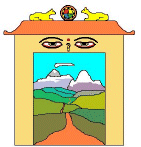
|
The Namche Conference: May 24-26,
2003 Participants and Presentations:
Bruce and Margaret Jefferies |
|
Bruce and Margaret Jefferies Wildlife Master Plan Project, Forest Department, Sarawak, Malaysia Email: brucejefferies@xtra.co.nz AbstractSagarmatha National Park: A World Heritage Site in crisis - or a figment of a western imagination? The United Nations Educational, Scientific and Cultural Organization (UNESCO) at its General Conference in Paris, France adopted the World Heritage Convention (WHC) on 17 November 1972. Articles 1 and 2 of the WHC provide definitions for Cultural and Natural Heritage while Articles 3, 4, 5 & 6 provide useful and functional statements that establish a precise setting as well as a helpful philosophical basis for the convention. The Operational Guidelines provide the General Principles that guide the establishment of the World Heritage List. These include a statement of particular significance, which in the author’s view emphasizes the real importance of designating Sagarmatha National Park a World Heritage Site: “ That the Convention provides for the protection of those cultural and natural properties deemed to be of outstanding universal value. It is not intended to provide for the protection of all properties of great interest, importance or value, but only for a select list of the most outstanding of these from an international viewpoint”. [Section I. A. 6 (i) Operational Guidelines for the Implementation of the World Heritage Convention - March 1999] The World Heritage Committee received from the Government of Nepal, which is recognized by UNESCO as the State Party, a nomination for Sagarmatha National Park (SNP) as a duel (Natural and Cultural) World Heritage Site and formal inscription took place in 1979. Since its inscription on the World Heritage List some 24 years ago, the environmental, social, economic and political landscape within Sagarmatha National Park, and in Nepal generally, has altered dramatically. The park’s fragile alpine environment continues to be stressed by overuse, arguably as much or more than when the park was established. Tourism has brought affluence and lifestyle changes within the Sherpa community. These changes and the recent, politically motivated, activities of the Maoist movement are other factors providing sources of stress. This paper provides a protected area manager’s perspective of the principles of the World Heritage Convention, and the way these can be compromised by issues beyond the control of the agency responsible for the management and day-to-day running of the park. As well as hind-sight, which involves reviewing events of significance over the last three or so decades, an attempt to chart a way forward is presented, with ideas offered that could help park management deal with the formidable job it faces to restore, maintain and conserve this very special part of our planet’s natural and cultural heritage. Are these ideas realistic and achievable for a country like Nepal or are they just a figment of the western imagination??
|
Email: info@namche.net
